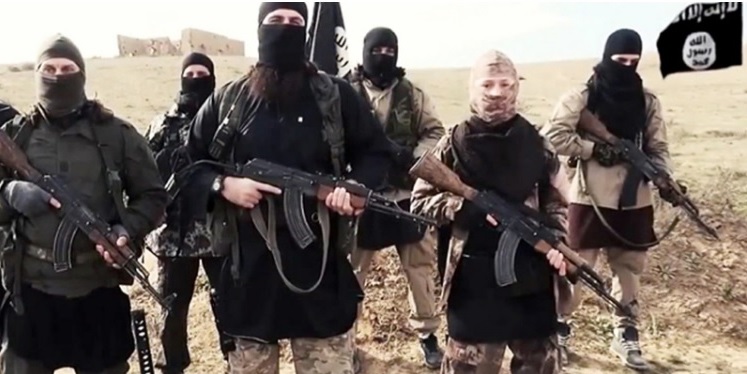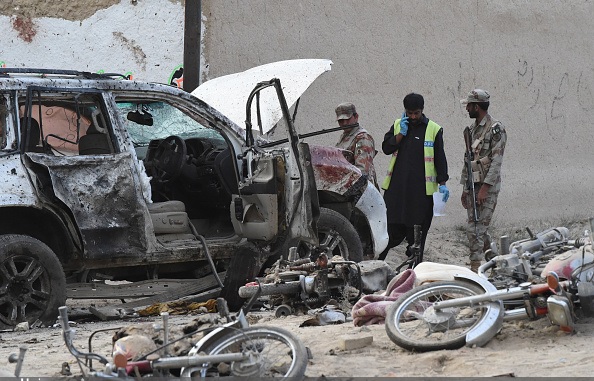
The Islamic State (IS) may be losing ground in the Middle East, but it seems to be making inroads into Pakistan. Notwithstanding the “Mother of All Bombs” attack on the Islamic State of Khurasan’s (ISK) headquarters in Nangarhar and the killing of its head Abdul Hasib Logari, the militant group has carried out two high-profile attacks in Pakistan recently: the killing of senior Afghan Taliban commander Maulvi Daud in Peshawar on April 29 and the attempted killing of the Jamiat Ulema-e-Islam-Fazl (JUI-F) leader and Senate Deputy Chairman Abdul Ghafoor Haideri on May 12 in Balochistan. These latest attacks emphatically hammer home the point that the ISK’s threat to Pakistan is real. It has emerged as one of the most potent terrorist organizations in the country. The ISK’s expanding presence in Pakistan makes the militant landscape in the country particularly complex and volatile due to its ideological appeal among urban, educated youth and partnership with local like-minded partners. These elements raise questions about the causal factors of violent radicalization in Pakistan and pose new challenges for Pakistan’s national counterterrorism strategy.
Emergence of ISK in Pakistan
In 2016, ISK and its affiliates carried out as many as nine terrorist attacks in Pakistan, killing 129 people and wounding over 112, forcing counterterrorism and law enforcement agencies to admit to the group’s dangerous presence in the country. ISK has gained enough space in the Af-Pak jihadist landscape to feature in top security discussions. For instance, the Trump administration has reportedly included the defeat of ISK as a goal in its soon-to-be-announced Af-Pak policy. Similarly, in response to the group’s growing threat in the region, the United States, Pakistan, and Afghanistan recently agreed to take action against ISK through joint efforts.
The group has shown resilience in the face of U.S. drone and airstrikes, inter-group fighting with the Afghan Taliban, and the Afghan forces’ ground operations. Despite losing top leaders Saeed Khan Orakzai and Abdul Rauf Khadim, ISK’s tremendous regenerative capacity has rendered the group extremely difficult to eliminate.
New Challenges
Recruitment of Educated Youth and Women
In Pakistan, in addition to recruiting from existing militant groups, IS has focused on recruiting university students and professionals for fundraising and propaganda operations. For instance, the Saad Aziz-led Tahir Saeen group, which was involved in the assassination of Pakistani social media activist Sabeen Mahmud and the tragic 2015 Safoora Goth bus attack, is comprised of university-educated students of the urban middle and upper-middle classes. Traditionally, violent radicalization of vulnerable youth and their recruitment in militant organizations in Pakistan was done through extremist mullahs who acted as intermediaries between jihadist organizations and the aspiring jihadists. With IS’s advent, social media platforms, such as Facebook, Twitter, and Telegram, among others, have replaced the mullah intermediaries as the preachers, recruiters, and disseminators of extremist ideologies.
ISK has also focused on recruiting Pakistani women. For instance, Bushra Cheema, a religious scholar with an M. Phil in Islamic Studies from Punjab University, ran the Bushra Network in Lahore, which sent jihadist recruits to Syria. Likewise, an all-female pro-IS militant cell was discovered in Karachi in 2014. The cell was involved in fund collection and dissemination of IS’s extremist ideology. More recently, Naureen Laghari, a medical student from Hyderabad, was recruited by IS as a suicide bomber to target the Easter celebrations in Lahore. Fortunately, she was arrested before she could carry out the attack.
These trends are not particularly surprising – the radicalization of educated youth and increased recruitment of women is consistent with IS trends in the Middle East and Europe. Nonetheless, the traction of this propaganda with the educated youth of Pakistan’s urban areas raises new questions about causal factors of radicalization specific to the Pakistani context. Contrary to erstwhile trends of radicalization that stemmed from extremist madrassas and affected the lower-middle classes in the rural and tribal areas, the growing appeal of IS-inspired violent extremism in educated youth of major cities points to penetration of jihadist groups in colleges, universities, and higher education institutions.

Partnership with Like-minded Militant Groups
Another aspect of ISK operations in Pakistan has been its partnerships with like-minded militant groups, such as Jundullah, Lashkar-e-Jhangvi Al-Alami (LJA) and JuA. The penchant of these groups to target Shias makes them natural partners for IS, contributing to an escalation of Sunni-Shia conflict in Pakistan. Moreover, IS not only excommunicates Shias but also apostatizes Sunni groups who do not follow its extremist version of Takfiri-Salafi Islam. The IS-claimed attacks on the shrines of Sufi saints Lal Shahbaz Qalandar in Sindh and Shah Nurani in Balochistan indicate that IS-affiliates in Pakistan will not limit their sectarian attacks only to Shias.
For attacks in Pakistan, IS-central is understood to provide overall ideological support while ISK provides training, funding, targets and attackers. The local partners (LJA, JuA, and Jundullah) arrange logistics and execute the attacks. These partnerships vary from area to area and group to group. For instance, Jundullah has pledged full allegiance to IS while LJA is cooperating without merging itself with the group.
These partnerships have bolstered ISK’s operational capabilities and outreach across Pakistan, enabling it to sustain itself in the country’s highly competitive jihadist landscape. Moreover, given the identical world outlook of IS and Pakistan’s anti-Shia extremist groups—of transforming the world into a Sunni caliphate—these partnerships can morph into a long-term strategic merger.
Way Forward
ISK’s ingress into Pakistan has made the militant landscape in the country more complicated, divisive and volatile. In addition to the group’s new forms of recruitment and partnerships with local groups, new militant leaders like Saad Aziz have escaped the gaze of security surveillance due to their lesser-known militant past. At the same time, the cell structure of IS’s urban affiliates in Pakistan makes their detection and elimination difficult— neutralization of one cell does not affect the operations of others cells, given their discreet nature. This has made counterterrorism-related policing and surveillance an uphill task.
Given the above challenges, military efforts alone will not adequately address the ISK threat in Pakistan. Material losses through kinetic operations against sanctuaries, fighters, and command structures are necessary, but not sufficient to defeat ISK. Ideological de-legitimization through counter-narratives and counter-ideology initiatives are equally important. The urban footprint of ISK’s urban affiliates in Pakistan necessitates a pro-active role of police, intelligence, and other law-enforcement agencies in counter-terrorism. The spy agencies will also have to create specialized units of social media monitoring to keep up with rapidly changing trends of violent radicalization, militant recruitment, and extremist propaganda.
***
Editor’s Note: Click here to read this article in Urdu
Image 1: ISIS Fighters (Dean11122, Wikimedia)
Image 2: May 12 attack in Mastung district, Quetta, Pakistan (Banaras Khan, AFP via Getty Images)


